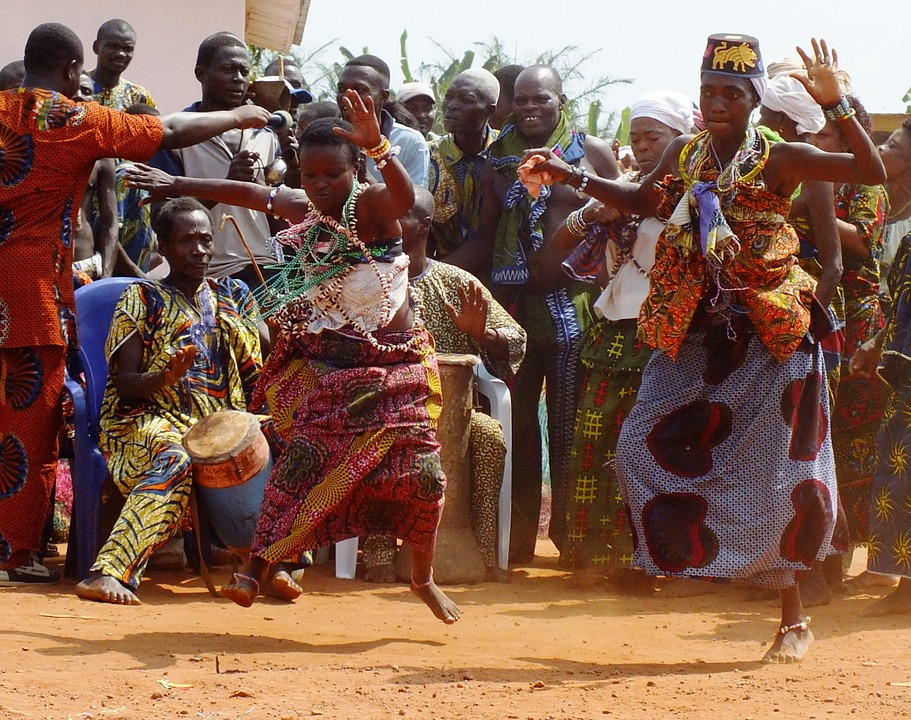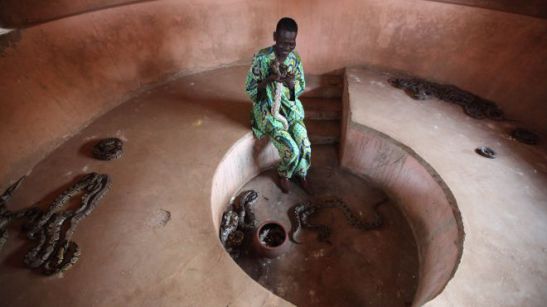
Benin
Benin A Royal Affair
The French-speaking nation of Benin is a true royal affair – home to the Dahomey Dynasty from 1600 to 1894. A country built on pride, migrants, the birthplace of voodoo (also known as vodun) and cultural influence from Brazil. And though it only gained independence in 1960, it is a country steeped in its roots, it is significant to African history as it was used as a route during slavery.
Benin has many attractions and technically two capitals. Porto Novo is revered as the political capital, while Cotonou is known as the economic capital. Each capital is different. Porto Novo has many Brazilian architectural structures, while Cotonou has become more of an urbanised area. But both capitals have the distinct Beninese liveliness and hospitality found all over the country.

https://pixabay.com/en/voodoo-dance-benin-traditional-736095/ – Image 01 (Dancers – note Pixabay is a commercial stock photo site)
With the multi-ethnic population in Benin, it is a country embedded with dance and song. Drum beats can be heard at every occasion, dancers visually telling their story through movement. It’s a mesmerising way to pay tribute to the Beninese heritage. Each region in Benin has specific dances, which shows that Beninese people are proud.

http://www.lion-hunter.com/style-twins-dashikis/ – Image 02 (Dashiki)
While people in urban areas wear western clothing today, but there is still much of Benin’s population still wear traditional outfits. Men can be seen wearing dashikis (colourful tunics), boubous (cotton robes) and loose fitting trousers. Whereas women are more covered up in their headwraps, bomba dresses (showcasing Portuguese influence) and pagnes (wraps). West African traditional wear is similar in that it has beautiful embroidery, brightly coloured and made of native textiles to the area such as cotton and raffia.

http://lesgourmandisesdekarelle.com/recettes-lgdk/plats-sucres/les-beignets-souffles-yovo-doko-gboflotos-croustillons-etc/ – Image 03 (Yovo Doko)
Visiting Benin and sampling the local cuisine is a must. Staples include rice, beans and vegetables – much like their neighbours. Try some original Benin food from street vendors, such as massa and yovo doko. Freshly fried yovo doko’s translate to “European pastry” and are alike to the European classic beignets. Another favourite with locals is ablo which is a steamed maize bread that can be served a side with other native dishes.

https://commons.wikimedia.org/wiki/File:Bj_Ganvie_Houses.jpg – Image 04 (Ganvie Lake Village)
Known as “Africa’s Venice on stilts”, Ganvie Lake Village lies only four-hours away from Porto Novo. Ganvie holds historical significance for the country during its horrific slave past, as natives evaded capture from Portuguese slave traders due to the inaccessibility. Ganvie also holds the title of the largest lake village in Africa, it stands as a monument against slavery in modern day. Today it is a structural masterpiece as the entire village is on stilts, villagers travel by boat and have a system to even farm fish. Plan a day trip as you venture out of the city and take your camera along, it’s a sight that you won’t want to forget.

https://unseenbenin.wordpress.com/2014/03/22/the-temple-of-python-in-ouidah/ – Image 05 (Temple of Pythons)
If you’re up for it, another must-see is the Temple of Pythons in Ouidah. It’s an hour away from the capital and would be best to visit with a guide. It has in interesting tale of origin and connection to voodoo that dates to the Dahomey Kingdom. The pythons are considered sacred and should not be harmed in any way. A rather unusual sight to see, it isn’t recommended for the faint-hearted. Ouidah also plays an important role in the history of slavery as the route of slave trade passed through here and has many statues to mark this and remember all the lives lost to slavery as well as the horrors of the trade.
And as you pack your bag and make your way to Cadjehoun Airport in Cotonou, be sure to pick up a Yoruba mask. These masks tell a story and are used in Beninese native ceremonies. Let it tell your journey of Great Benin.
